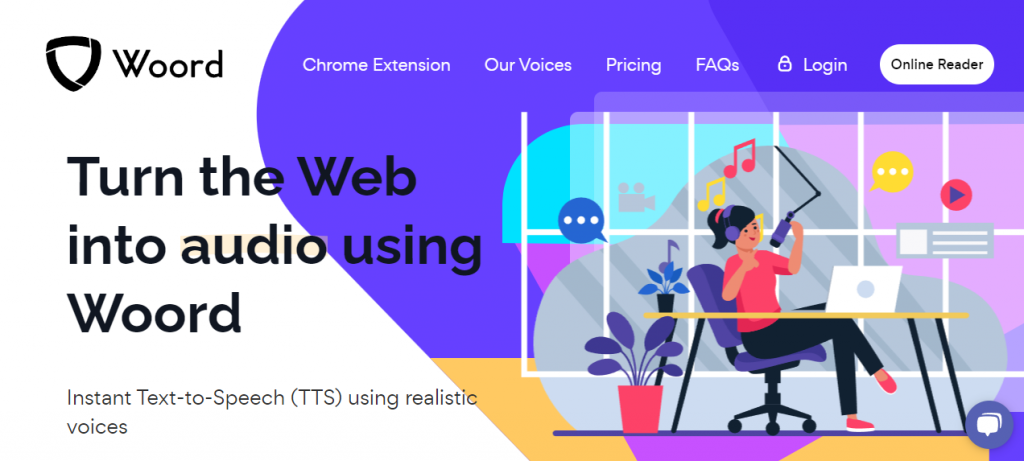Text-to-speech (TTS) technology has emerged as a powerful tool for improving the accessibility of video content.
With the increasing amount of video content available online, including instructional videos, webinars, and entertainment videos, making these videos accessible to all viewers, including those with hearing impairments, is becoming more important than ever.
By using TTS technology with APIs like Woord, video creators can provide an alternative method for conveying spoken content, making it accessible to viewers who may otherwise miss out on this information.
This technology can also save time and resources when creating videos and ensure consistency and accuracy in the spoken content. Overall, TTS technology can significantly improve the accessibility of video content, making it more inclusive for all viewers. If you want to try the best TTS API for videos we recommend Woord.
How Can Text To Speech Improve The Accessibility Of Videos
Text-to-speech (TTS) technology can be a great asset for videos, especially those that include a lot of spoken content or dialogue. Here are a few reasons why:
- Accessibility: TTS technology can make video content more accessible to viewers who are deaf or hard-of-hearing. By adding captions or subtitles that are read out loud by a TTS engine, these viewers can still follow along with the spoken content.
- Time-saving: TTS technology can also save time and resources when creating videos. Rather than recording a human voiceover for every spoken word in the video, the TTS engine can quickly and easily generate the spoken content.
- Consistency: With TTS technology, the spoken content in the video will always be consistent, as it is generated by a machine and not subject to human error or variability.
- Multilingual support: TTS engines can also support multiple languages, making it easier to create videos for a global audience.
Overall, TTS technology can enhance the accessibility and efficiency of videos by providing spoken content that is consistent, flexible, and accessible to a wider audience.
What’s Woord?
Woord is a service that allows developers to convert text into speech.
This enables you to listen to any text you want and create applications that can read aloud any text; such as news articles, product descriptions, or even animated series scripts. The text can be in any format as long as it’s understandable by computers. It can be plain text, XML, JSON, or even programming code.
The API then processes the text and returns a response in a format that can be used by your application. This response may be in the form of an audio file that you can play back; or a string of commands that you can use to control a voice synthesizer.
Why Do We Recommend Woord?
Languages
This API has 50 voices from 21 different languages. Regional variations are also available for select languages, such as Canadian French, Brazilian Portuguese, and several other languages.
Smart Voice Technology
Using AI technology, their synthesized voices are of the highest quality, emulating human-like natural sounding speech.
Unlimited Audios
Have the freedom to convert any text content you want. Blog posts, news, books, research papers or any other text content.
How To Use This API
To convert text into audio with Woord, all you have to do is:
1. Open the API and paste in the text or URL you want to convert to audio.
2. Select the language you want the audio to be in and the speed at which you want it to be read.
3. Once you’ve done that click on “Speak It”, Woord will create an audio file that you can listen to.



